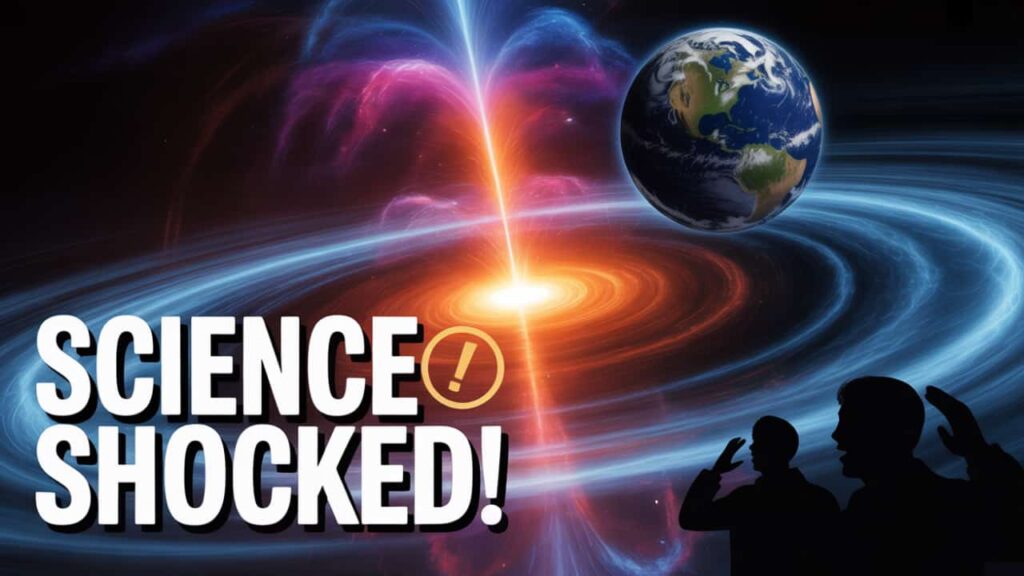A monumental black hole collision has sent shockwaves—both literally and scientifically—through the global astrophysics community. On November 23, 2023, astronomers detected the most massive black hole collision ever recorded, involving two celestial giants measuring approximately 100 and 140 times the mass of the Sun.
These cosmic titans merged to form a single black hole weighing in at an unprecedented 225 solar masses. The event, brief yet powerful, lasted just 0.1 seconds, but its gravitational impact was 20 times stronger than typical black hole merger signals.
Table of Contents
🔭 Scientists Stunned by Record-Breaking Black Hole Collision
Detected by the LVK Collaboration—which includes the LIGO observatory in the U.S., Virgo in Italy, and KAGRA in Japan—this black hole collision has challenged everything researchers thought they knew about how such entities form and evolve.
“This is the most massive black hole binary we’ve observed through gravitational waves, and it presents a real challenge to our understanding of black hole formation,” said Professor Mark Hannam from Cardiff University, a senior member of the LIGO Scientific Collaboration.
The detection has raised fundamental questions about the limits of stellar evolution. According to current models, black holes originating from dying stars should not exceed 100 solar masses. Yet this event defies that threshold.
🧬 The Science Behind the Black Hole Collision
The most striking element of this black hole collision is not just the mass—but the incredible rotational speeds involved. Both black holes are believed to have been spinning at 400,000 times faster than Earth’s rotation, which may have amplified the energy and gravitational wave strength observed.
These details have led scientists to propose that the black holes involved may have been formed from earlier black hole collisions—suggesting a hierarchy of mergers forming progressively larger black holes.
“One possibility is that the two black holes in this binary formed through earlier mergers of smaller black holes,” added Hannam.
🌠 Why This Collision Matters
This collision matters because it forces the scientific community to rethink the established limits of black hole formation. If black holes can grow this large through successive mergers, they may bridge the gap between stellar-mass black holes and supermassive black holes found in galactic centers.
More importantly, the event may provide the first observational evidence of intermediate-mass black holes—an elusive category long theorized but rarely confirmed.
“It will take years for the community to fully unravel this intricate signal pattern and all its implications,” said Dr. Gregorio Carullo, a researcher at the University of Birmingham and member of the LVK team.
🌐 A Global Effort to Study the Black Hole Collision

This groundbreaking black hole collision was detected through a coordinated effort across continents. The LVK Collaboration brings together the most advanced gravitational wave detectors on the planet:
- LIGO (USA) – First to detect gravitational waves in 2016
- Virgo (Italy) – Added precision in European detections
- KAGRA (Japan) – Deep-underground detector for reduced seismic interference
Together, they’re building a real-time map of cosmic phenomena, with this collision marking one of their most extraordinary finds to date.
📈 The Collision in Numbers
| Aspect | Details |
|---|---|
| Event Type | Black hole collision |
| Date Detected | November 23, 2023 |
| Masses of Pre-Merger Objects | ~100 & ~140 solar masses |
| Resulting Black Hole Mass | ~225 solar masses |
| Signal Duration | 0.1 seconds |
| Signal Strength | 20× typical gravitational wave event |
| Rotation Speed | 400,000× Earth’s spin rate |
🔚 Conclusion
The recent black hole collision is more than a spectacular cosmic event—it’s a scientific turning point. It challenges long-standing beliefs, invites revolutionary theories, and showcases the power of international scientific collaboration.
As more gravitational wave detections roll in, we may soon uncover answers to questions that have puzzled humanity for decades. Until then, this black hole collision remains one of the most mysterious and exciting discoveries in the history of astrophysics.
❓ FAQ – Frequently Asked Questions
What is a black hole collision?
A black hole collision occurs when two black holes merge due to mutual gravitational attraction. The resulting collision emits powerful gravitational waves, which can be detected on Earth using specialized instruments.
Why this collision is unusual?
Because both black holes exceeded the theoretical mass limit of 100 solar masses—a threshold no black hole formed from a single star should cross. This forces scientists to reconsider existing astrophysical models.
How was the collision detected?
Because both black holes exceeded the theoretical mass limit of 100 solar masses—a threshold no black hole formed from a single star should cross. This forces scientists to reconsider existing astrophysical models.
How was the black hole collision detected?
It was detected by the LVK Collaboration, which includes LIGO, Virgo, and KAGRA. These observatories use laser interferometry to measure subtle ripples in spacetime caused by cosmic events.
What could this mean for future discoveries?
This collision opens the door for identifying intermediate-mass black holes and could reshape our understanding of how galaxies and black holes evolve. It also offers clues about the origin of supermassive black holes.
📡 For more stories like this, visit: 👉 www.documentarytimes.com